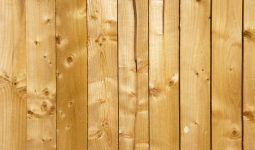Concrete is a common material used on construction sites. It is made from aggregate mixed with cement and water and serves various purposes.
We can use them in residential building sites and laying pathways. However, engineers use different types of concretes differently.
Read on as we discuss them.
1. Plain Concrete
Plain concrete is one of the most popular types of concrete. It is used to construct structures and pavements, particularly in locations that don’t require great tensile strength.
The compressive strength of the concrete ranges from 200 to 500 kg/cm2, and the density ranges from 2200 to 2500 Kg/meter cube.
Furthermore, the fundamental elements of plain concrete are sand, cement, and coarse particles, and the makers would have mixed these elements with a specific amount of water.
2. Prestressed Concrete
Prestressed concrete is one type of concrete. A concrete contractor uses prestressed concrete in many major constructions.
This is a unique approach in which the concrete bars are stressed before the actual service load application.
It requires the employment of bars, which they install at each end of the structural unit. When the concrete hardens, this unit compresses.
Furthermore, they produce and build prestressed pieces on-site. Prestressed concrete helps construct bridges, heavy-duty constructions, and long-span roofs.
3. Reinforced Concrete
Reinforced concrete is one of the different types of concrete. Producers reinforce it to increase its strength and ability to bear high-tensile strains.
Steel is helpful in concrete reinforcement in bars, rods, and steel fibers.
However, creating a strong bond between the concrete and the reinforcement steel is essential while reinforcing.
Further, engineers mainly use this concrete to construct columns, strong bridges, ceilings, and other constructions.
4. Normal Concrete
Normal strength is another popular concrete form. There are several types of strength in normal-strength concrete, ranging from 10 MPa to 40 MPa, and the setting time ranges from 30 minutes to 90 minutes.
This concerns the construction site’s cement characteristics and weather conditions.
This concrete mixture involves all the fundamental ingredients: gravel, concrete, and sand.
It is typically used for pavements or buildings without high tensile strength to function correctly.
It is unsuitable for many other constructions since it cannot withstand the strains caused by wind loads or vibrations.
5. Lightweight Concrete
Lightweight concrete has a density of less than 1920kg/m3. Because of its use in concrete design, we will have lightweight aggregates.
Lightweight concrete is helpful for various applications, including protecting steel buildings and constructing long-span bridge decks.
Aside from that, they are also helpful in constructing building blocks, and one of their most essential characteristics is that it has extremely low heat conductivity.
6. Asphalt Concrete
Asphalt concrete is among the different types of concrete. Engineers use composite materials to build airports, roadways, and other pavements.
It has many beneficial characteristics, including durability and workability.
Asphalt mixes come in various shapes and sizes to serve multiple purposes.
For example, base and surface mixes serve entirely different tasks in the pavement system, so they are created in diverse ways.
Many types of asphalt concrete mixes are available to construct various structures.
7. Volumetric Concrete
Engineers created volumetric concrete to solve the problem of great distances.
Builders can use it when they must employ multiple types of concrete mix simultaneously on the same site.
One truck can mix and deliver two different combinations of concrete.
After mixing the concrete, it’s essential to maintain the proper humidity and temperature levels to make it usable.
With volumetric concrete, the materials and water are transported to the construction site in specialized vehicles known as volumetric mobile mixers.
8. Glass Concrete
Glass concrete is another type of concrete. It provides long-term strength and thermal insulation to surfaces, and various applications use it differently.
Compared to other varieties of concrete, glass concrete provides higher thermal insulation and has a more visually appealing appearance.
Furthermore, the term “glass concrete” refers to the integration of glass with exposed concrete, which opens up a new range of possibilities for architectural design.
9. Vacuum Concrete
Vacuum concrete is a type of concrete in which people evacuate the excess water to increase the strength of the concrete.
Because the water used for mixing is not necessary for hydration, it is removed before the mixture hardens. Vacuum pumps with vacuum mats help remove the water.
This method is perfect for constructions that are frequently exposed to fast-moving water.
Vacuum concrete has a higher density and bond strength than regular concrete.
Because it combines effectively with existing concrete, it resurfaces old surfaces.
10. High-Density Concrete
High-density concrete is the last on our list of different types of concrete. Another name for this concrete type is heavyweight concrete.
The coarse particles in high-density concrete are made from high-density crushed rocks, with densities ranging between 3000 and 4000 kg/m3.
Heavy-duty aggregates are helpful in this application. These aggregates are most valuable for constructing atomic power stations and other comparable projects, although we can use them in other applications.
The hefty weight aggregate will aid the structure’s ability to withstand radiation.








